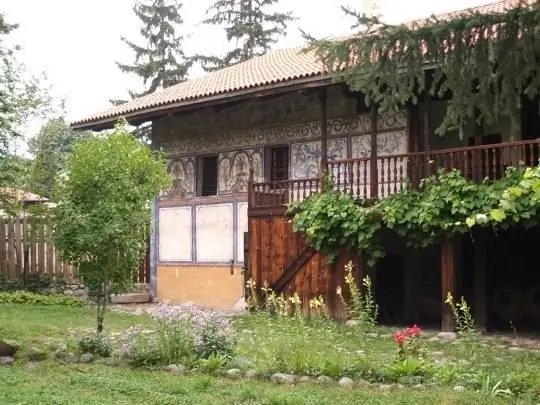
Description of the attraction
Velyanova kyscha is one of the most interesting sights of Bansko. This is an old house that carries the spirit of the past. The building, which is a typical example of Renaissance architecture in the region, still retains its authentic interior setting. Currently, Velyanova kyshcha is an architectural and ethnographic museum. Due to the unique decorative decoration, the house was given the status of a cultural monument of national importance in 1967.
The building was built around the end of the 18th - beginning of the 19th century. Initially, the house belonged to a wealthy merchant family who had to move to live elsewhere. When Velyan Ognev, a representative of the Debar Art School, who was supposed to decorate the Holy Trinity Church, arrived in the city, he was temporarily housed in the vacated building. When the work in the temple was completed, the residents decided to give the master the house in which he lived as a token of gratitude. Velyan Ognev decorated the new dwelling inside and outside, as a result of which the building turned into a real work of art.
Velyanova kyscha is an example of the architectural type of fortified houses. The structure is a two-story building made of stone and wood. As with most houses of this type, there are characteristic hiding places and hiding places in the basement. The changes that V. Ognev made to the architecture of the building were so innovative that nothing like this could be seen in any other Bulgarian house. Among the masterpieces of paintings that have survived to this day, belonging to the master's brush, is the so-called "Blue Room": the artist decorated the walls of the room with images of Venice and Istanbul. In this room there is a self-portrait of V. Ognev, made in the form of a sketch. According to the stories, the image of human faces was not the strongest point in the master's work.
Particularly impressive are the decorative elements on the facade of the building: skillful carvings on the central porch, paintings with geometric and plant motifs on the southeastern wall, etc.
Visitors to the ethnographic museum can get acquainted with the interior decoration of the house, with the peculiarities of the arrangement of the interior and the way of life of its former owners.






